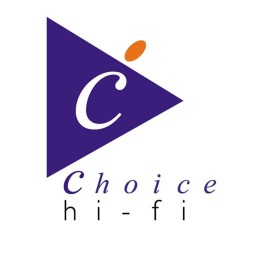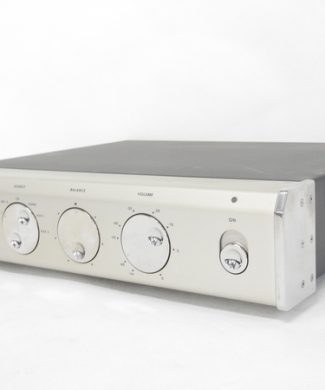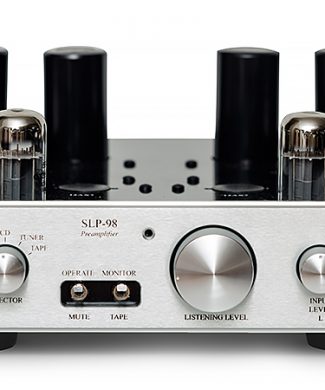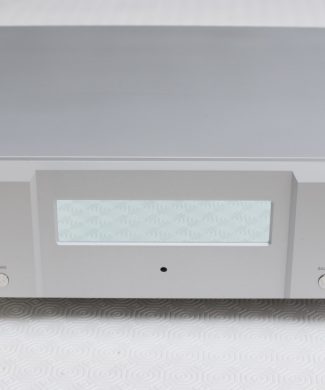DAC1 – Digital / Analog Converter
The B.M.C. Audio DAC 1 is not only a digital-to-analog converter, it serves as a preamplifier and the control center of a consistent B.M.C. chain.
The DAC1 features also a high resolution USB input and B.M.C.’s propietary Superlink connection for the B.M.C. belt drive CD player.
Brand: B.M.C. Audio GmbH
Model Name/Number: DAC1PreHR
Price (RRP): £4200
Choice Hifi Price: £3250
Product Information:
Superlink
B.M.C.’s exceptional SUPERLINK connection is ideal for transmitting digital audio signals, and an alternative to established SPDIF-compatible interfaces such as AES/EBU 110 Ohm, coaxial 75 Ohm, and the optical Toslink. Unlike SPDIF transmissions, SUPERLINK does not merge digital audio signals and different clocks into one single stream that must be decoded back into separate signals and clocks after the DAC receives it. SPDIF makes sense from a commercial point of view, but SUPERLINK is a solution without compromise. It requires four times as many connection cables but avoids all coding processes. SUPERLINK transmits left/right-clock, bit-clock, and digital music data from the CD transport to the DAC while the DAC generated master-clock is sent from the DAC1 to the CD transport. Four 75-Ohm BNC cables with matching impedance conduct the transmission. SUPERLINK results in a more intense link to the music, a wider and more realistic soundstage, more detail, and beautiful sonic colors.
Sample Rate Converter
Due to the approach of Superlink just the shortest signal path is available and thus the sample-rate-converter (alias SRC, or up-sampler) is not available.
For standard SPDIF inputs the SRC may deliver a better result whenever the source signal includes a noticeable amount of jitter. But due to its digital signal processing an SRC adds a certain coloration to the music signal.
Digital Filter
All other options are available for any digital input. Two different digital filters are available with either “Flat” frequency response optimization or “Pulse” for best dynamic response and with minimized pre- and post ringing. The pulse filter has a soft treble roll off, but specifically avoids the unnatural pre-ringing. In spite of its filter’s soft treble roll off, it is generally considered as more transparent sounding.
Oversampling rate
Furthermore there is a “Low” ( 32fs) and a “High” (128fs) oversampling rate available. Both options have their individual character and are suitable for decent sound tuning. “Low” has a more dynamic and detailed expression, while “High” is softer and smoother.
Clock Synchroniszation
The digital signal performance is further optimized by a clock synchronization circuit right in front of the DAC-Chips. All digital signals are re-timed to the local master clock and thus the point of lowest jitter is at the DAC-Chip where the analogue music signal is made.
Two PCM 1792 DACs in Mono Mode
The D/A conversion is made by two 24-Bit / 192kHz TI/Burr-Brown PCM1792 chips with current output.
CI/LEF Analog Circuit
The output current is filtered and converted to an output voltage by discrete, fully balanced I/V converters, which operate feedback free. Thanks to the special “Current Injection” circuitry a maximum of sound quality is preserved, which is stabilised with the unmatched “LEF” driver circuit keeping all the sonic details.
Originally those circuits were designed to put focus on the sound quality and leave the measurement specifications second, but the present standard is on a level that leaves no need for such a choice: Both are at the highest level and the sound is in a class of its own.
Volume Control
DAC1 has a pre-amplifier module with a multi-functional volume control. A motor driven, remote-controllable potentiometer is acting as a position indicator using an A/D-converter and a volume value is calculated which is transmitted in two different ways:
- One set of 62 steps of digital potentiometer in a balanced configuration, buffered by a set of LEF output drivers, which can drive power amplifier inputs as well as headphones. Balanced XLR outputs are available.
- An optical interface for a DIGM (digital intelligent gain management) control, for a lossless volume control of B.M.C.’s power amplifiers.
The second option does not require a preamp as long as the source is a digital one, so the fixed output can be connected directly to the power amplifiers. This signal is not divided inside the power amplifier, but always used untouched and the volume is set by 66 different power amplifier gain settings in 1dB steps. The usage is therefore not any different from a traditional volume control, but the impact of DIGM is remarkable:
- A: There is no excess gain in the amplifiers, and the signal path can be very short.
- B: Reducing the volume also reduces noise and distortions unlike a traditional volume control.
- C: DIGM reduces the final speaker voltage and there is no more gain afterwards, so noise is kept low.
- D: There is neither any traditional nor digital potentiometer inside the signal path.
- E: DIGM switches precise metal-film resistors in parallel to the signal current and thus is a native part of the amplifier’s I/V conversion.1
Age: 1 Year 3 months
Condition: 10/10
Voltage: 220/240/50Hz
Finish/Colour: Silver
Packaging? Yes
Accessories? Yes
Item Location: In Stock
Status: Second Hand




 to enquire about this product!
to enquire about this product!












